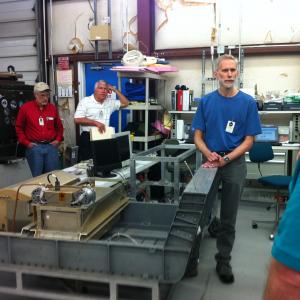Primary tabs
Focused Cavity Aerosol Spectrometer (FCAS)
The FCAS II sizes particles in the approximate diameter range from 0.07 mm to 1 mm. Particles are sampled from the free stream with a near isokinetic sampler and are transported to the instrument. They are then passed through a laser beam and the light scattered by individual particles is measured. Particle size is related to the scattered light. The data reduction for the FCAS II takes into account the water which is evaporated from the particle in sampling and the effects of anisokinetic sampling (Jonsson et al., 1995).
The FCAS II and its predecessors have provided accurate aerosol size distribution measurements throughout the evolution of the volcanic cloud produced by the eruption of Mt. Pinatubo. (Wilson et al., 1993). Near co-incidences between FCAS II and SAGE II measurements show good agreement between optical extinctions calculated from FCAS size distributions and extinctions measured by SAGE II.
Accuracy: The instrument has been calibrated with monodisperse aerosol carrying a single charge. The FCAS III and the electrometer agree to within 10%. Sampling errors may increase the uncertainty but a variety of comparisons suggests that total uncertainties in aerosol surface are near 30% (Jonsson, et al., 1995).
Precision: The precision equals 1/ÖN where N is the number of particles counted. In many instances the precision on concentration measurements may reach 7% for 0.1 Hz data. If better precision is desired, it is necessary only to accumulate over longer time intervals.
Response Time: Data are processed at 0.1 Hz. However, the response time depends upon the precision required to detect the change in question. Small changes may require longer times to detect. Plume measurements may be processed with 1 s resolution.
Weight: Approximately 50 lbs.

